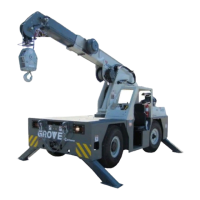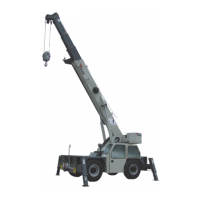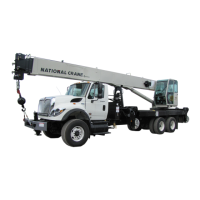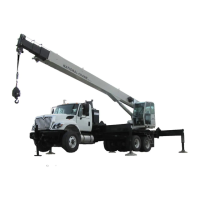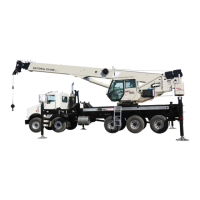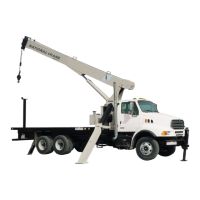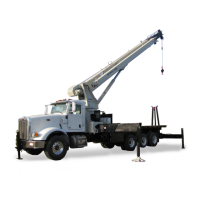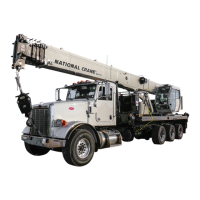Published 3-30-2018, CTRL 636-05 6-31
CD15 OPERATOR MANUAL MAINTENANCE
condition in which the battery(s) may cause a problem is
when they have been completely discharged for a long
period of time. Under this condition the alternator may not be
able to recharge the battery(s) and a battery charger will be
required for charging the battery(s).
Before using a battery charger, an attempt can be made to
recharge the battery using the engine alternator by first jump
starting the crane (See Jump Starting, in Section 3) and
letting the engine run.
DO NOT charge a frozen battery; it may explode and cause
injury. Let the battery warm up before attaching a charger.
Charging rates between 3 to 50 amperes are satisfactory if
no excessive gassing or spewing of electrolyte occurs or the
battery does not feel excessively warm (over 125° F [52° C]).
If spewing or gasing occurs or temperatures exceed 125° F
(52° C), the charging rate must be reduced or temporarily
stopped to permit cooling.
Replacing the Battery
NOTE: The fluid in electric storage batteries contains
sulfuric acid, which is POISON and can cause
SEVERE CHEMICAL BURNS. Avoid all contact of
fluid with eyes, skin or clothing. Use proper
protective gear when handling batteries. DO NOT
tip any battery beyond a 45° angle in any direction.
If fluid contact does occur, follow the First Aid
suggestions that follows.
Battery Electrolyte First Aid
• External Contact - Flush with water.
• Eyes - Flush with water for at least 15 minutes and get
immediate medical attention.
• Internal - Drink large quantities of water. Follow with
milk of magnesia, beaten egg or vegetable oil. Get
immediate medical attention.
NOTE: In case of internal contact, DO NOT give fluids that
would induce vomiting.
Remove the battery very carefully to avoid spillage of battery
fluid. Properly dispose of the battery.
Fuel System
Fuel Storage
Storage of fuel for an extended period causes accumulation
of sediment, dirt, water and other foreign materials in the
fuel. Many engine problems are caused by dirty fuel and long
storage periods.
Keep fuel in an outside location. Use a shelter to keep the
fuel as cool as possible. The water from condensation must
be removed at regular intervals from the storage tank.
Fuse Replacement
Refer to Figure 6-41 for the location of the fuses on this
crane.
WARNING
FIRE HAZARD
Engine fuel is flammable and can
cause a fire or explosion. Death
or personal injury could occur.
Do not put fuel in tank with engine
running.
Keep open flames away.
Do not use smoking materials during
refueling or servicing.
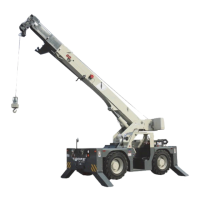
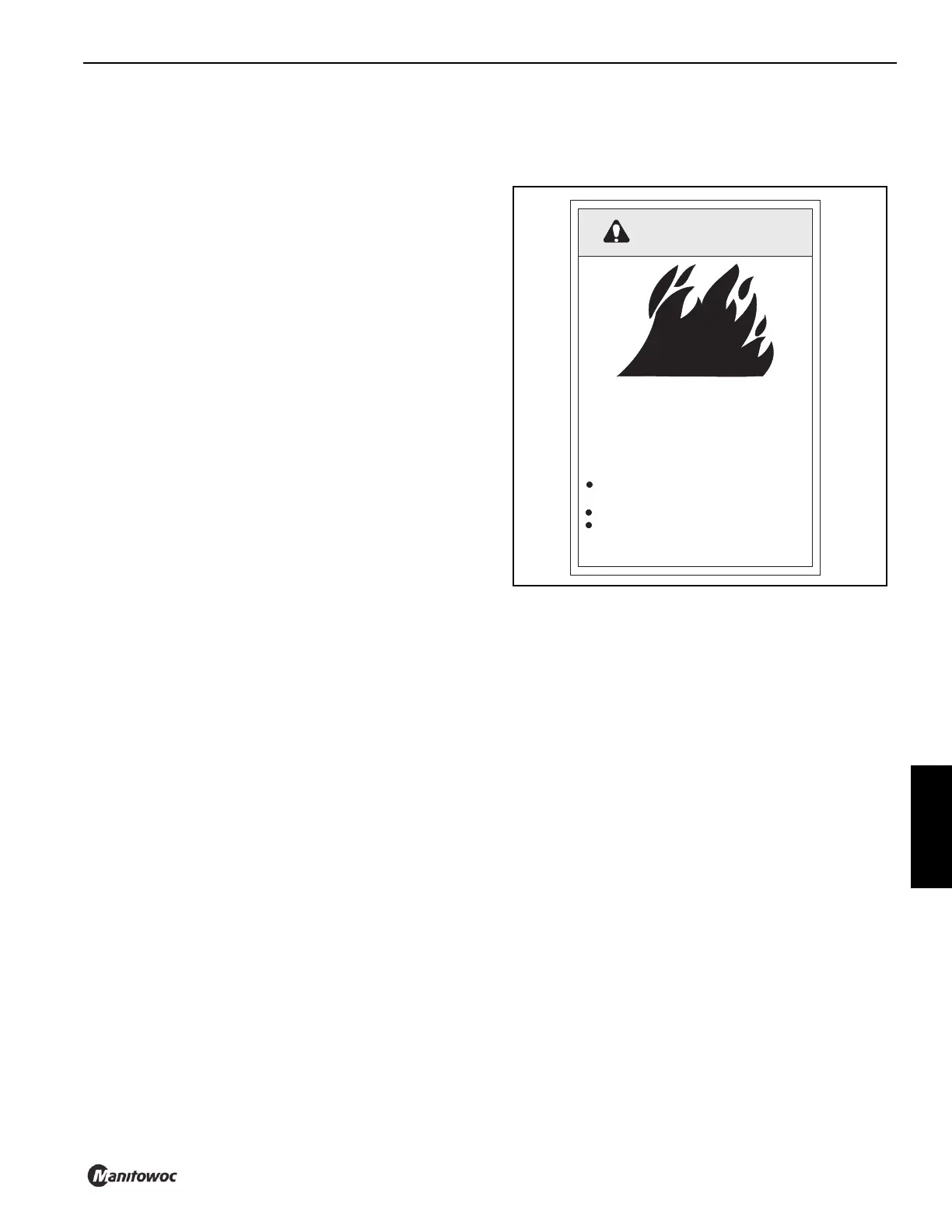